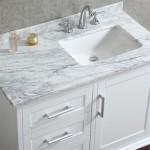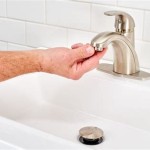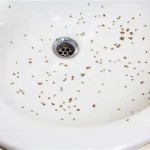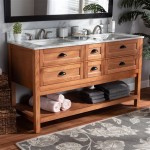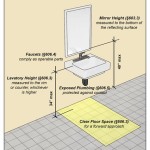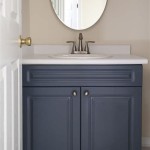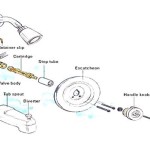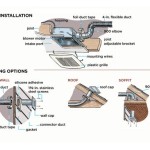How To Split Bathroom Fan and Light Into Two Switches
Many bathrooms are wired with a single switch controlling both the exhaust fan and the overhead light. This setup, while simple, lacks flexibility. Separating these functions onto two switches provides greater control over the bathroom environment, allowing users to ventilate the room without necessarily illuminating it, and vice versa. This article outlines the process of splitting a combined bathroom fan/light circuit into two separate switches.
Understanding the Existing Wiring
Before beginning any electrical work, it is crucial to understand the current wiring configuration. Typically, a single switch setup uses a two-wire cable running from the switch box to the ceiling fixture. This cable carries both the power and the switched load for both the fan and the light. The switch interrupts the flow of electricity to both devices simultaneously. To separate the controls, a new cable and a different type of switch will be required.
The first step is to turn off the power to the circuit at the breaker panel. Confirm the power is off using a non-contact voltage tester on the wires in the switch box. Once confirmed, remove the existing switch and examine the wiring. There should be two black "hot" wires connected to the switch terminals, and a bundle of ground wires (usually bare copper or green). There may also be white neutral wires capped together in the back of the box.
Running the New Cable
Splitting the circuit necessitates a new three-wire cable running from the switch box to the ceiling fixture. This cable contains a black, red, and white wire, along with a ground wire. The existing two-wire cable will remain. This new cable provides separate pathways for switching the fan and the light independently.
Routing the new cable will depend on the accessibility of the ceiling cavity and the wall behind the switch. Consult local building codes for appropriate cable routing methods. Secure the cable at both ends, leaving enough slack for connections within both the switch box and the ceiling fixture box.
Wiring the New Switch and Ceiling Fixture
With the new cable in place, the wiring modifications can begin. In the switch box, connect one of the existing black "hot" wires to the common terminal of a new double-pole switch (sometimes referred to as a "double switch"). This provides the incoming power source for both switches. The other black wire from the existing cable should be capped with a wire nut and tucked away. This wire becomes unused.
Next, connect the black wire from the new three-wire cable to one of the traveler terminals on the double-pole switch. This will control the light. Connect the red wire from the new cable to the other traveler terminal on the double-pole switch. This will control the fan. Connect all the ground wires together using a wire nut. This ensures proper grounding of all components. The white neutral wires should remain capped together in the box. They are not directly connected to the switch.
At the ceiling fixture box, connect the black wire of the new three-wire cable to the black wire of the light fixture. Connect the red wire of the new three-wire cable to the black wire of the fan. If there was only one previously existing cable, this could be the black wire that was connected to the previous single switch. Ensure the white neutral wires from the existing cable, the new cable, and the fan/light fixture are all connected together. Again, connect all ground wires together. Securely mount the new switch and the ceiling fixture. Restore power to the circuit and test the functionality of the separate switches.
Troubleshooting
If the fan or light does not function correctly after completing the wiring, double-check all connections. Ensure the correct wires are connected to the corresponding terminals on the switch and the fixture. Verify the breaker is not tripped and that power is reaching the switch box. If problems persist, consult a qualified electrician.
Safety Precautions
Working with electricity can be dangerous. Always turn off the power to the circuit before beginning any electrical work. Use a non-contact voltage tester to confirm the power is off. If you are unsure about any aspect of the wiring process, consult a qualified electrician. Following these steps and safety precautions will allow for a successful separation of the bathroom fan and light controls, enhancing the functionality and comfort of the bathroom.

How To Wire Bathroom Fan And Light On Separate Switches Led Lighting Info

How To Wire Bathroom Fan And Light On Separate Switches Led Lighting Info

Wiring Bathroom Exhaust Fan Light With Two Switches Doityourself Com Community Forums

Wiring Fan Light Using Separate Switches Ceiling With Exhaust Switch

Bathroom Light Fan Combo On Separate Switches Lighting
Controlling A Fan Light Combo And Vanity With Two Switches Diy Home Improvement Forum

How To Put Bath Fan And Light On Separate Switches Instead Of One Switch

Exhaust Fan Wiring Diagram Timer Switch

How To Wire A Bathroom Fan And Light On Separate Switches 14 Step Guide Home Inspector Secrets
How To Wire A Harbor Breeze Fan And Light 2 Switches Quora
Related Posts
